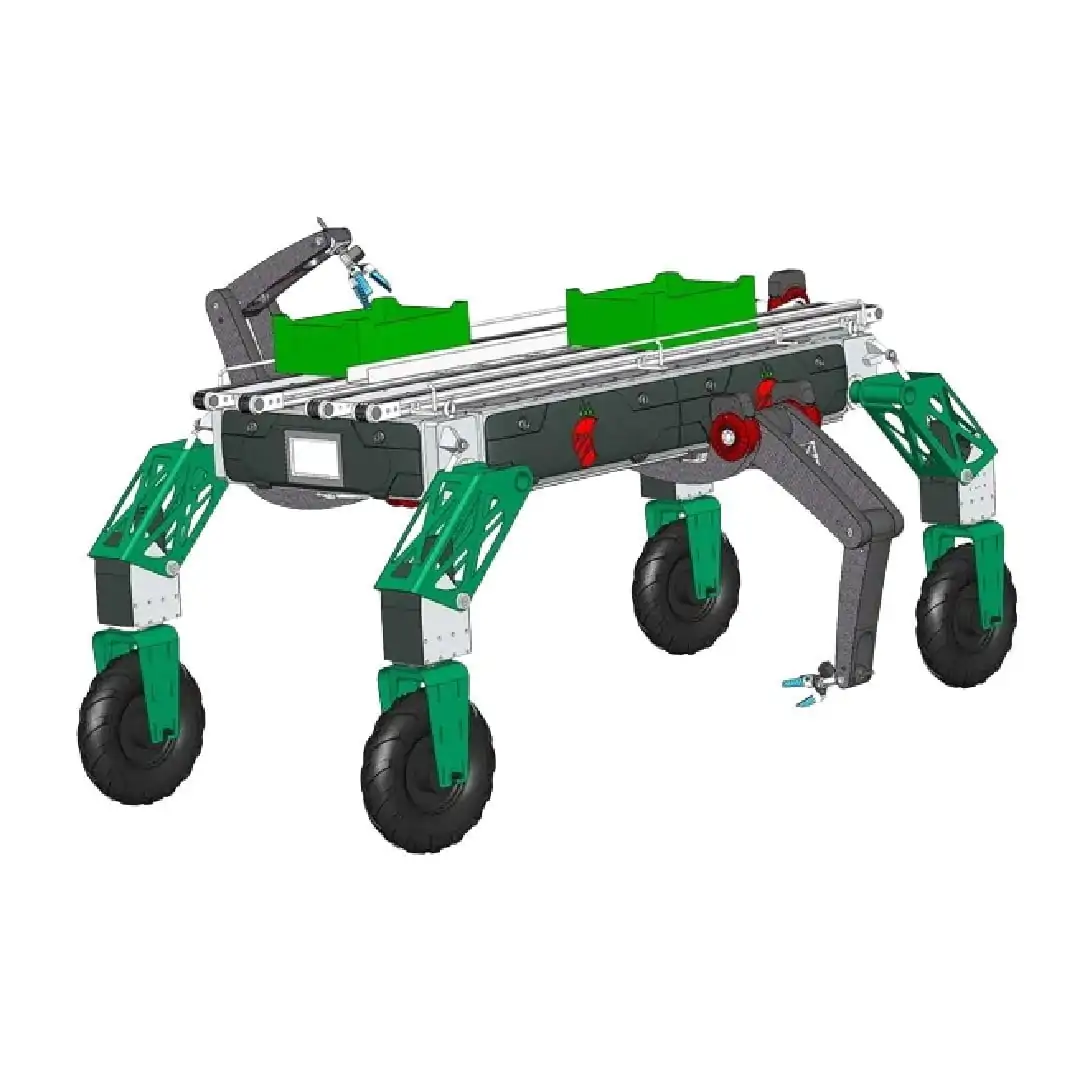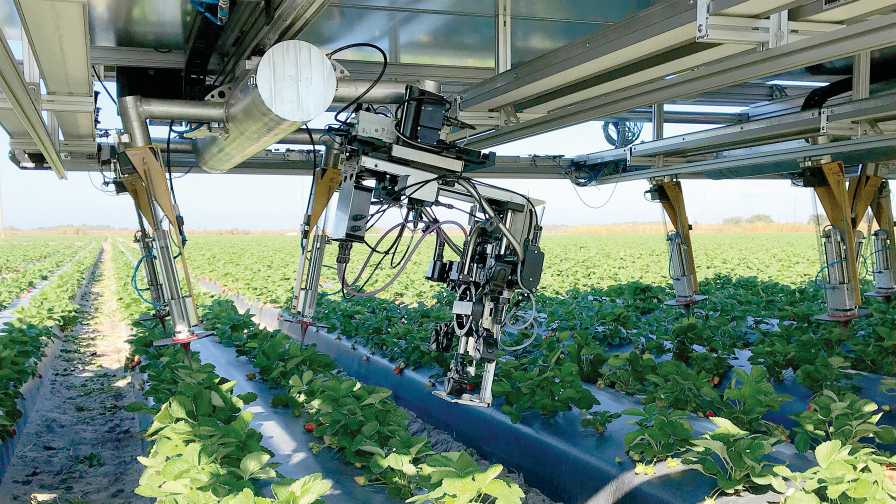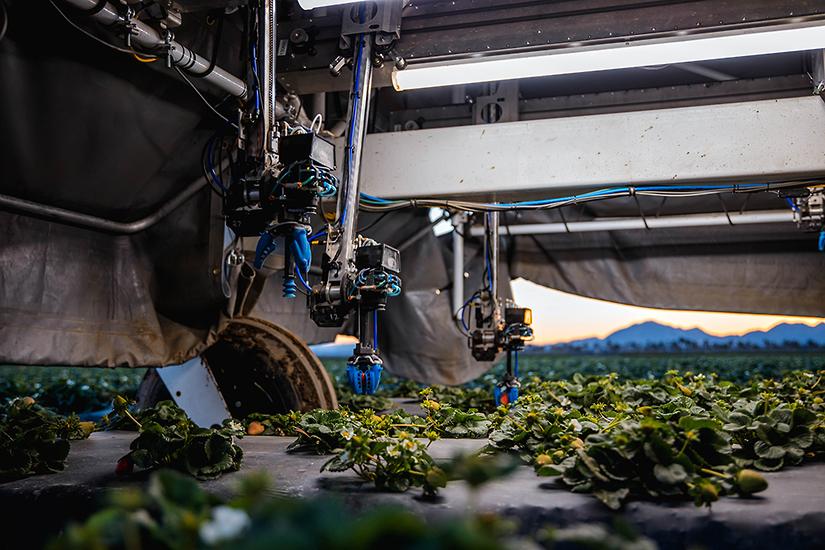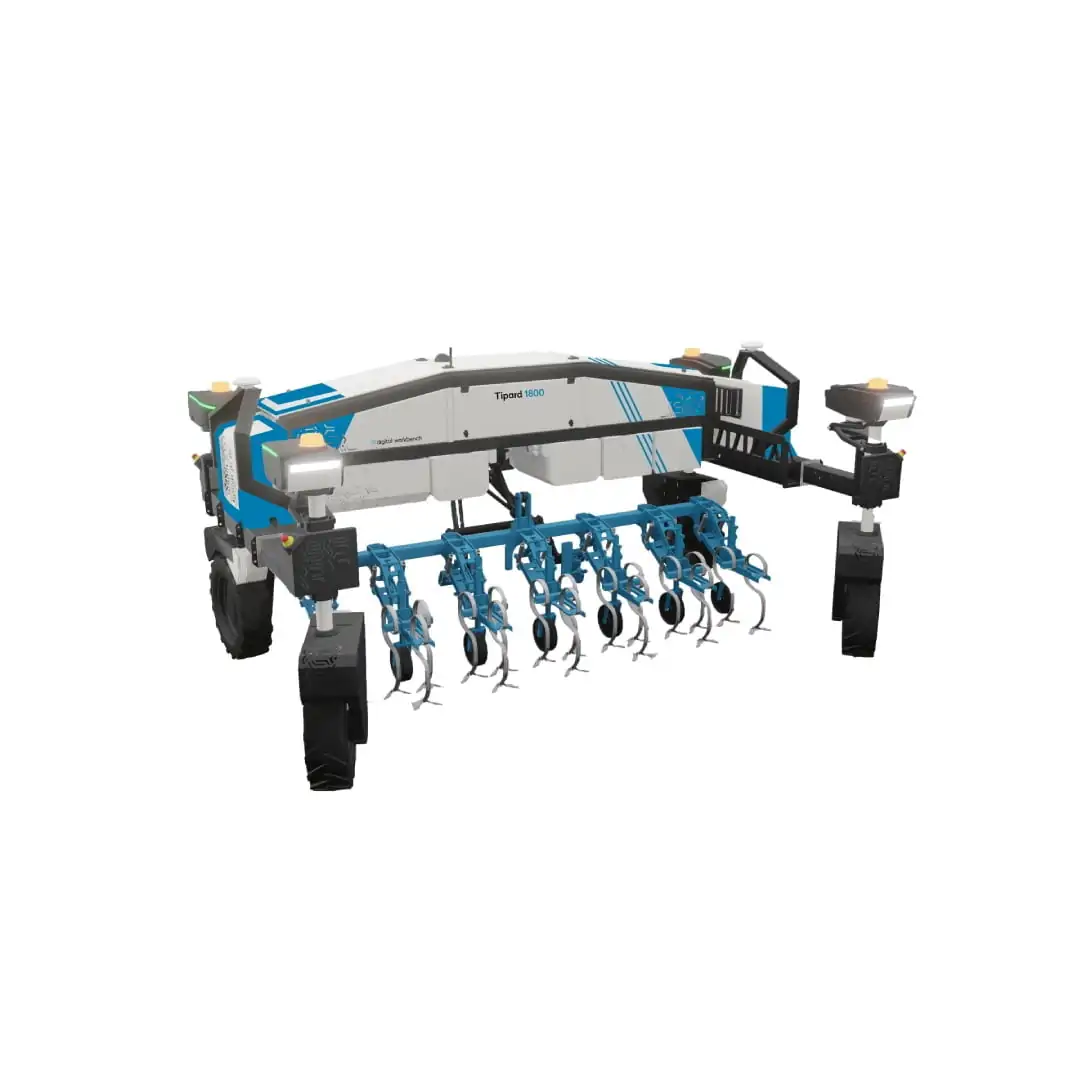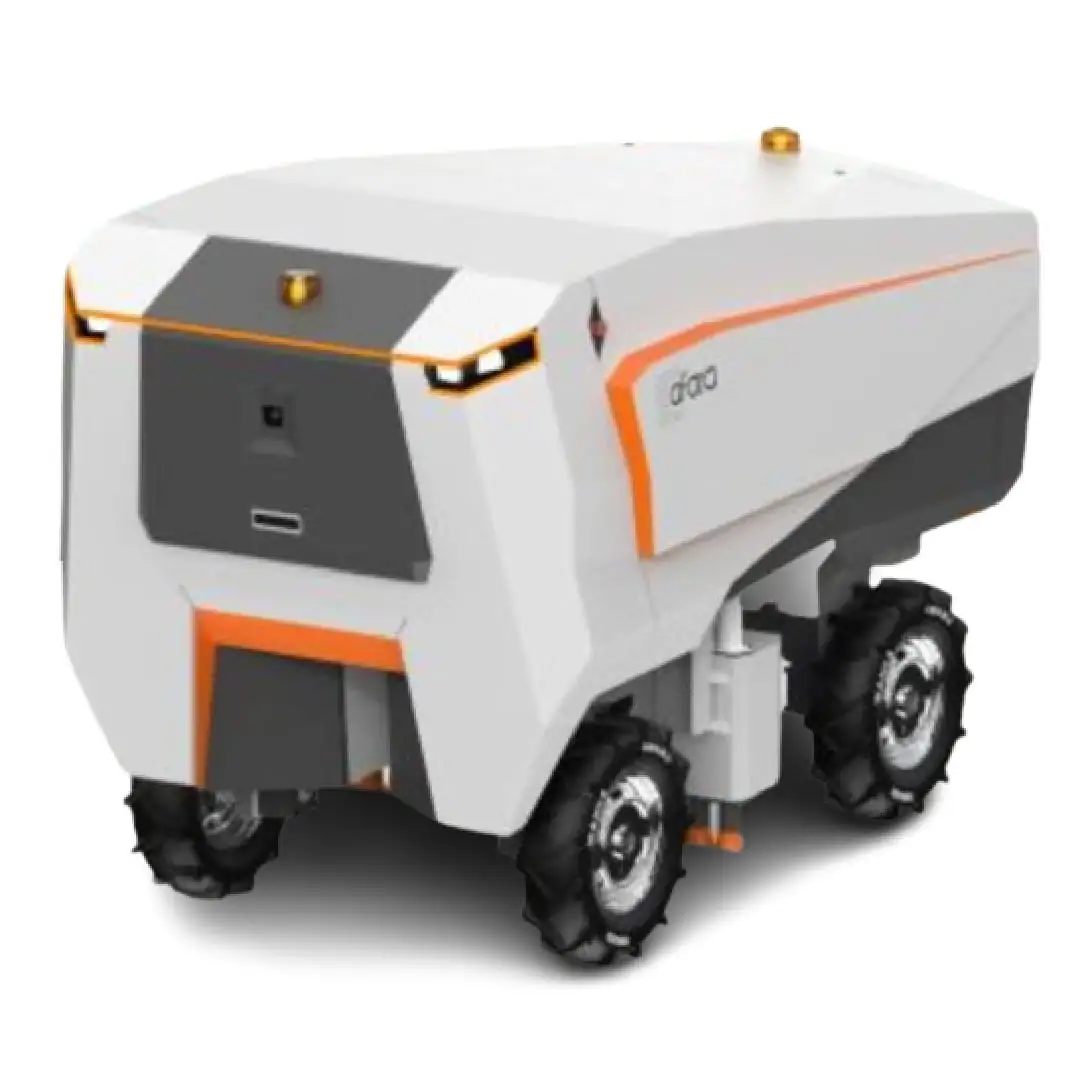Shivaa introduces an innovative approach to strawberry harvesting with its fully autonomous, field-operable robot. Leveraging advanced technology, it promises to streamline the harvesting process, ensuring precision and reducing labor dependency. This state-of-the-art robotic solution is designed to address the growing challenges in the agricultural sector, particularly in the domain of strawberry harvesting, offering a new horizon of efficiency and sustainability for farmers and agricultural businesses.
The Shivaa Strawberry Harvester embodies the shift towards automation in agriculture, aiming to alleviate the pressures of labor shortages and enhance operational efficiency. It provides an autonomous mechanism that not only picks strawberries with remarkable accuracy but also integrates seamlessly into the natural and human aspects of farming. The system combines advanced technologies with a practical design, making it a valuable asset for open-field ridging cultivation.
Key Features
At the core of the Shivaa Strawberry Harvester’s design is a suite of sophisticated sensors and artificial intelligence algorithms, enabling fully autonomous navigation across strawberry fields. This allows the robot to seamlessly move and operate in challenging open-field environments, even working alongside human pickers, thereby enhancing overall farm productivity.
The harvester utilizes an advanced sensing system comprising 3D, depth, and color filter cameras. These cameras are capable of processing both visible and invisible light spectrums, providing precise data for accurately assessing strawberry ripeness and exact position. This multi-spectral imaging is crucial for the robot’s selective harvesting process, ensuring that only the ripest fruits are identified and picked.
Mechanical ingenuity is evident in the robot’s gripping mechanism. It features three-fingered, pneumatically actuated soft robotic grippers meticulously designed to mimic the delicate yet firm grasp of human hands. These grippers employ a gentle twisting motion to detach the fruit from the plant, significantly minimizing the risk of bruising and preserving the quality of the harvested strawberries.
Furthermore, the Shivaa Harvester is built for resilience in real-world agricultural settings. It incorporates a passive suspension system that maintains continuous ground contact and stability, allowing it to navigate and operate effectively on uneven terrain and in varying environmental conditions. Its modular electronics design also facilitates easy maintenance and future upgrades, ensuring long-term operational viability.
Technical Specifications
| Specification | Value |
|---|---|
| Size | 245 x 120 x 100 cm (Length x Width x Height) |
| Weight | 150 kg (excluding harvested goods) |
| Battery Life | Over 8 hours of operation |
| Power Supply | 48V Li-Ion batteries, 2x 29 Ah |
| Speed | 6 km/h |
| Suspension | Passive suspension for continuous ground contact and stability on uneven terrain |
| Steering | Ackermann steering for precise navigation |
| Robot Arms | 4 degrees of freedom (DOF), mounted on a linear rail |
| Grippers | Three-fingered, pneumatically actuated soft robotic grippers with twisting motion |
| Cameras | 3D, depth, and color filter cameras (visible and invisible light spectrums) |
| Electronics | Modular design for easy maintenance and upgrades |
| Actuation Engine | 4 BLDC wheel motors, 2 steering motors, 12 BLDC direct drives for arm and conveyor belt actuation |
Use Cases & Applications
The Shivaa Strawberry Harvester is primarily designed for the autonomous selective harvesting of strawberries in open fields, providing a critical solution to labor shortages in the agricultural sector. Its ability to operate autonomously means it can be integrated into existing farming operations, picking alongside human workers to enhance overall efficiency and output.
The robot is engineered to perform reliably in real-world environmental conditions, including unpredictable weather and uneven terrain, which are common challenges in open-field farming. Moreover, its design allows for potential night operation, utilizing constant artificial lighting to create optimal conditions for its image processing algorithms, thereby maximizing harvesting windows and productivity.
Strengths & Weaknesses
| Strengths ✅ | Weaknesses ⚠️ |
|---|---|
| Fully autonomous navigation across complex field environments. | Highly specialized for a single crop (strawberries), limiting versatility for diverse farms. |
| Advanced multi-spectrum sensing for precise ripeness and position detection. | Designed for open-field ground cultivation, not suitable for elevated substrate systems. |
| Gentle, human-like gripping mechanism minimizes fruit bruising and preserves quality. | Requires initial capital investment for advanced robotic technology. |
| Robust passive suspension ensures stability and continuous ground contact on uneven terrain. | Requires skilled personnel for monitoring, maintenance, and software management. |
| Modular electronics design facilitates easy maintenance and future upgrades. | |
| Optimized for open-field ground cultivation, addressing a specific market need. | |
| Capable of picking strawberries without their peduncle, streamlining post-harvest. |
Benefits for Farmers
The Shivaa Strawberry Harvester offers significant business value for farmers by directly addressing critical operational challenges. It substantially reduces dependency on manual labor, which is often scarce and costly, leading to considerable cost savings. The robot’s precision harvesting minimizes fruit damage and spoilage, ensuring a higher quality yield and reduced waste.
By enabling continuous operation, including potential night shifts, the harvester optimizes picking windows and improves overall operational efficiency. This leads to increased productivity and a more consistent supply of ripe strawberries to the market. Its sustainable approach, by reducing waste and optimizing resources, also contributes to more environmentally friendly farming practices.
Integration & Compatibility
The Shivaa Strawberry Harvester is engineered for seamless integration into existing open-field ridging cultivation systems. Its autonomous navigation capabilities mean it can operate effectively within current farm layouts and infrastructure. The robot is designed to work collaboratively, capable of picking alongside human workers without disruption, ensuring a smooth transition to automated harvesting.
While specific integration with broader farm management software is not detailed, the system’s data collection on ripeness and location could potentially feed into analytics platforms for improved yield forecasting and operational planning.
Frequently Asked Questions
| Question | Answer |
|---|---|
| How does this product work? | The Shivaa Strawberry Harvester operates autonomously, using 3D, depth, and color filter cameras to identify ripe strawberries. Its AI processes this visual data, guiding four robotic arms equipped with soft, pneumatically actuated grippers to gently pick the fruit with a twisting motion. |
| What is the typical ROI? | While specific ROI figures are not publicly available, the Shivaa Strawberry Harvester is designed to significantly reduce labor dependency and operational costs in strawberry harvesting. By enabling continuous, precise picking, it enhances efficiency, minimizes fruit damage, and allows for potential night operation, leading to increased yield and reduced waste over time. |
| What setup/installation is required? | The Shivaa Harvester is designed for integration into existing open-field ridging cultivation systems. Its autonomous navigation capabilities mean minimal specific setup for field operation, primarily involving initial field mapping and calibration for optimal performance within the farm’s layout. |
| What maintenance is needed? | The robot features a modular electronics design, which simplifies maintenance and component replacement. Regular checks of the robotic arms, grippers, cameras, and battery systems are recommended, along with software updates to ensure peak performance and longevity. |
| Is training required to use this? | While the Shivaa Harvester is fully autonomous in its operation, training would likely be required for farm personnel to oversee its deployment, monitor its performance, manage data outputs, perform routine maintenance, and troubleshoot any operational issues. |
| What systems does it integrate with? | The Shivaa Strawberry Harvester is designed to operate within open-field farming environments. Its autonomous nature allows it to work alongside human pickers, and its data collection capabilities could potentially integrate with farm management systems for yield monitoring and operational insights. |
| Can it operate in different weather conditions? | Yes, the harvester is designed to operate in real-world environmental conditions, including changing weather and uneven terrain, thanks to its robust construction and passive suspension system. |
| Does it pick other fruits? | The Shivaa Strawberry Harvester is specifically developed for the autonomous selective harvesting of strawberries (Fragaria × ananassa Duch.) in open fields. |
Pricing & Availability
Pricing for the Shivaa Strawberry Harvester is not publicly available. The final cost may vary based on specific configurations, regional factors, and any additional services required. For detailed pricing information and availability, please contact us via the Make inquiry button on this page.
Support & Training
Comprehensive support and training programs are typically offered to ensure optimal performance and user proficiency. These programs would cover operational guidance, routine maintenance procedures, and troubleshooting, enabling farm personnel to effectively manage and maximize the benefits of the Shivaa Strawberry Harvester.

